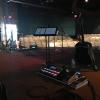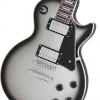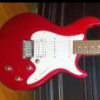Search the Community
Showing results for tags 'mod'.
-
Hello! Does anyone know if it is possible to assign the tap tempo switch to control the pre-delay on any of the reverb blocks in HX Effects? I have an EHX Cathedral that does this and it has become one of my go to delay/reverb sounds. I'm wondering if this is possible within HX. I thought about creating a custom block that includes both a reverb and a single repeat delay set to full wet before the verb, but i'd love to find a cleaner way to do it. Anybody have any thoughts?
-
I thought I would add this to the forums after I had lurked about and gathered info from other people modding cry babys etc. I was fortunate enough to pick up a Boss FV-30 cheap and wanted to use it as a Helix pedal. Looking on the forums, there seemed to be a lot of issues with 0-100-0 sweeps. The wiring diagrams on the forum for a Line 6 pedal made it look like a pretty simple fix and I have a soldering iron so thought I'd give it a go. I wanted to make it so anything I did was completely reversible to factory in case it didn't work out. The below should work on the EV-30 too. Tools needed Philips Head Number 1 (PH1) 10mm, 11mm, 12mm wrench Side Cutters Soldering Iron Materials needed 20K 16mm Linear Rotary Potentiometer D Slot head $3 Hook Up Wire 1/4 Inch Mono Jack $3 If wanted - Rubber gromets or Pan Head machine screw to fill in and blank outlets not used Time About an hour Step One Remove the six screws on the base. They're pretty tight so make sure you use a lot of downward pressure on the screwdriver to make sure you don't strip the heads. Step Two The FV-30 and EV-30 use a cam mechanism to turn the pot. It only rotates around 210 degrees and this is why I used a 20k pot to get close to the 10K needed for the Helix. As you'll see at the end I only got just under 7K, but it works fine. Loosen the nut holding the pot to the cam mechanism frame. Then remove the two screws holding it to the pedal. Again, they're tight so make sure you don't strip the heads. Step Three Loosen the nuts around the Input and Output Jacks. Take them off and slide the Printed Circuit Board (PCB) back. Step 4 You should now be able to remove the entire cam mechanism. It slides off the pin attached to the pedal plate leaving two black plastic parts attached to the frame and pot. With rotation and a bit of fiddling, you should be able to disengage the two parts. Try to remember how you did it, so you can reverse it after separating. Step 5 Gently pull off the U shaped cam from the pot. You need to line the parts up so there is room to pull off the cam. From memory, the arm was at 90 degrees to the frame. Mine was tight but able to be done by hand, no tools. If you're having trouble, a flathead screwdriver between the notch on the pot and the cam may help, but be careful not to break the plastic. Remove the pot and store the PCB somewhere in case you want to go back to the factory pedal. Step 6 Here's where it got hard and annoying. The pot I got was slightly larger in diameter than the factory one. The flat also wasn't deep enough. There aren't many pots readily available, so I spend time with a file to get it to the right size. On my pot, I also had to extend the pot notch further towards the pot threads as the cam sat too proud to rotate and not hit the other plastic arm. If I had a 3D printer, I think I would have spent the time to re-engineer and print a new part to fit the pot. Find a friend with one or if you're like me and don't have friends (with 3D printers that is), spend the half hour with a metal file, slowly test fitting often to make sure it's a tight fit. If you get into trouble and can't get the cam off the pot, use a small flathead screwdriver to pry it off. Keep any shavings out of the pot. I thought of taping it up but only after the fact. Step 6 Reassemble the pot and use a wrench to ensure the retaining nut is tight. A dot of thread locker (purple to make it easier to remove) might help but don't get any in the pot. Step 7 Soldering. Put the cam in the position it will be in in toe down (fully clockwise from the cams side). If you have a multimeter, bridge two pins with one multimeter clip and put the other clip on the remaining pin. Ensure it reads 0K. Rotate to check it goes to 20K. If you don't have a multimeter, I'm guessing that all pots are wired the same and you can just solder like I have in the pic. No laughing at my poor soldering. Step 8 Solder on the 1/4 inch jack and bolt it through an open outlet. I went with the one that is printed as output. You could use rubber grommets or a pan head machine screw to fill in any left over holes. The jack I had was a tight fit against the corner and you might need to find one that works or mod it a little with a file. Reassemble the cam frame and screw it back into the pedal. Don't forget to hook that pin up again. Replace the base plate. Step 9 Test. I plugged in a TS to TS cable and got the multimeter on the end. Zero at heel down yay! Only 6.69 at Toe down. Boo. was hoping for 10k and now nervous it wouldn't work. Plugged into the Helix. Added a Volume to an empty block and hooray, it works. 0-100 no issues. I was initially a bit worried as I pulled out the jack from the pedal in mid sweep which stuffed up the auto calibration and couldn't get all the way to 100 again. Found out that to reset it, I had to remove the jack at the Helix end then replug at heel down. I only have limited playing experience, so I can't report on how the motion/response feels as opposed to other expression/volume pedals. I did read the cam mechanism results in a not quite linear response. All said though, a great pedal for only 6 extra bucks and able to be returned to factory settings if I ever want to. Hope this can help someone else out it they have one laying around. Boss.mp4
- 1 reply
-
- expression
- mod
-
(and 1 more)
Tagged with:
-
Hello everyone; I love the "Sonic Port VX" and it's my device of choice to record ideas alone and with friends, but if there is a posibility to buff the device I would like to do it... Specially the microphones. So, here are my questions: I have the "Shure MV88" and love the microphone sound from it. 1.- Can I replace the microphone capsules from my "Sonic Port VX" with the ones on the "Shure MV88"? 2.- Is this technically possible? I would just connect the positive and negative cables to the capsules. Thanks in advance for your time and help! zL
-
Everyone likes the end result first, so here is a pic or the board standing up. (Sorry about my lollipop photography skills) So I've been looking at the Helix a bit over the last couple of days and one thing that stuck out to me was a lack of guides for the I/O when standing up looking at the pedal. In a dark setting and at a show most of the time I'm leaning over my board to look at connections upside down and then having to combat faint text to work out where I'm at. I noticed that the design of the Helix has an angled section near the top. I thought it was a bit odd that this wasn't potentially used for ease of use with respect to the back panel. So I got to thinking. I used a label maker I had lying around at home and purchased some neon green fluorescent cartridges for it. Then, I printed a few copies of each section (adjusting the spacing if need). The method behind this was to be able to separate each section so that the 'boarder line' were in line with where the input/outputs would roughly be. Once all of them were done it as just a matter of sticking them in the order I preferred and now its much easier to deal with plugging everything I need in. Here are some photos in a dark and light setting. I hope it helps or inspires someone. - Zahn
-
Here is Helix live stage left. The 2204 Mod, Timmy, Minotar, mic pre, staged gain, multiple delays, LA studio comp....my take using the Duesenberg. Intro is stacked vintage delays. Great Elevation Worship song. Slight video sync issue due to live stream recording, no post production but worth a share for those interested IMO. https://www.youtube.com/attribution_link?a=bnjjuejLQT-xCC8N&u=/watch%3Fv%3DK_ZeUcewO7k%26feature%3Dem-share_video_user
- 6 replies
-
- marshall2204
- mod
-
(and 2 more)
Tagged with:
-
Hi, I've recently purchased the FBV shortboard mk2 to replace my beringer fcb1010 as a midi control pedal. As I'm a violinist none of Line6's amps are really suitable for me, but I'd love to take advantage of the functionality the rj45 port enables. There seems to be a bit of info regarding using non line6 foot pedals via rj45 with line 6 amps, but not the other way around. Is anyone able to help out with how it should be wired? Thanks heaps
- 4 replies
-
- shortboard
- rj45
-
(and 2 more)
Tagged with:
-
So while I had my 500 apart to fix some solder points, I modded it to have regular pickups as well. I routed out space for an HSS configuration, customized a strat pickguard and installed a balance/blend pot to go between the two. Took me a while but it works great.




